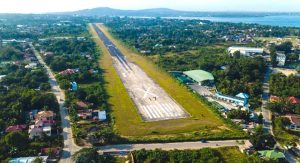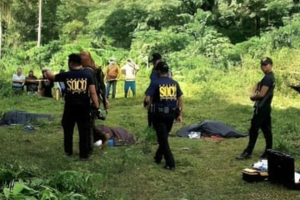About ninety percent of illegal structures along the famous Alona Beach on the island of Panglao have been demolished.
Panglao Municipal Engineer Rogelio Bonao told the Chronicle yesterday that a few structures violating the 20-meter salvage zone consisting of seawalls and riprap belonging to three business establishments, namely, Isis Bungalows, Alona Kew and Diving King at Bohol Divers Resort, still remain.
The municipal government of Panglao had to stop clearing these remaining structures as a group of resort owners sought the issuance of a temporary restraining order and injunction against the ongoing demolition. The case is pending before the Regional Trial Court (RTC), Branch 1, Tagbilaran City.
Bonao added that it was also upon the appeals of owners of the 3 resorts which elicited the support of Gov. Arthur Yap that their seawalls and riprap be temporarily spared with the onset of the “habagat” season, or the southwest monsoon.
Resort owners have apparently convinced the governor that their seawalls are built to prevent sand erosion especially during “habagat”.
Angie Hoffman, president of the Panglao Island Chamber of Commerce and Industry (PICCI), also explained to the Chronicle that it is during “habagat” that resort structures near the shoreline are dangerously exposed to big waves and that is the reason why ripraps are built to act as wave breakers to prevent damage to these structures.
While no TRO or injunction has been granted in favor of the resort owners violating the 20-meter easement, Bonao said the municipal government just heeded the reprieve from demolition given by the governor.
“We still hope that the remaining violators would voluntarily remove their illegal structures. As we have observed, the sections of Alona Beach where structures within the easement zone have been cleared, the beach looks much orderly and spacious,” the municipal building official said.
SET-BACK ALONG ROADS
Meanwhile, demolition of illegal structures violating the required set-back and road right of way are simultaneously being undertaken along the Alona and Barangay Tawala area.
Bonao said that since their demolition squad temporarily stopped beach-front clearing operations, they turned their sights on illegal structures that have mushroomed along the barangay, municipal and national roads of Alona, Barangay Tawala.
Restaurants, stores, cafes, bars, hotels and lodging houses line the streets of the area. Most of these business establishments have violated the required set-back since their building permits were issued before the Alona-Tawala Road was converted into a section of the national highway called the Fonacier Circumferential Road.
As a result, several secondary roads have also been re-classified into municipal roads from being barangay roads, thus, increasing the setback requirement from 8.5 meters to 10-meters (municipal) and 15-meters (national) from the center of the road, on both sides.
As most of the existing buildings will be totally demolished if the setback requirement is strictly implemented, Bonao said, the demolition team have adopted a win-win solution by reducing to 10-meters the set-back along the national highway.
New applications for building permits are however required to comply with the 15-meter set-back, according to Bonao.
As of yesterday, Bonao estimates that around 40-percent of buildings that have illegally encroached the required setbacks along the highway have been demolished.
Bonao said that the main road going to Alona Beach is their top priority for clearing operations as they are set to implement a road concreting and drainage project.
He said the project is deemed urgent as foul odor coming from the street’s canal greets tourists passing by the road, considered the busiest in the Alona area.
Demolition of illegal structures is also being undertaken around the periphery of the Panglao Public Market in Poblacion, Panglao, Bonao concluded. (KB.)








Be First to Comment